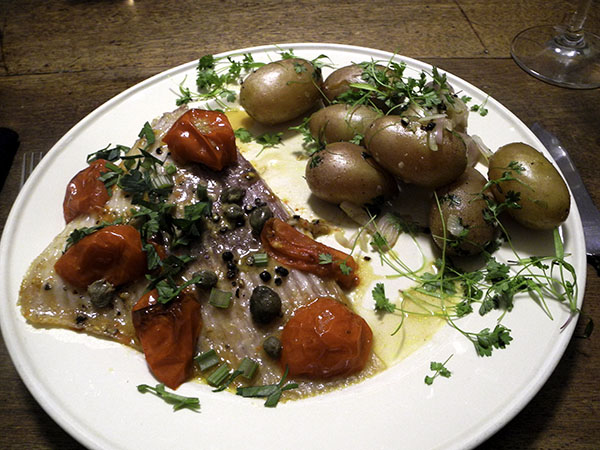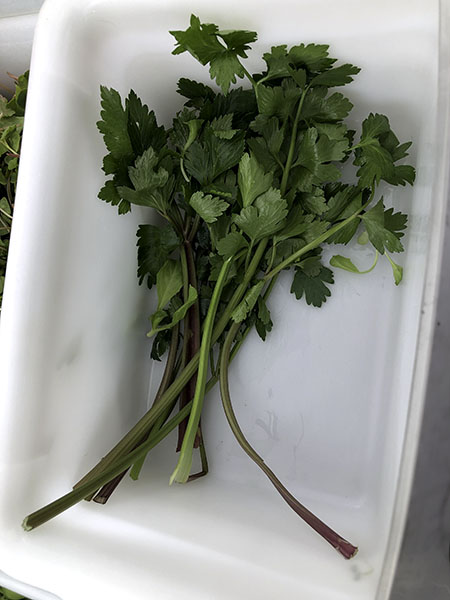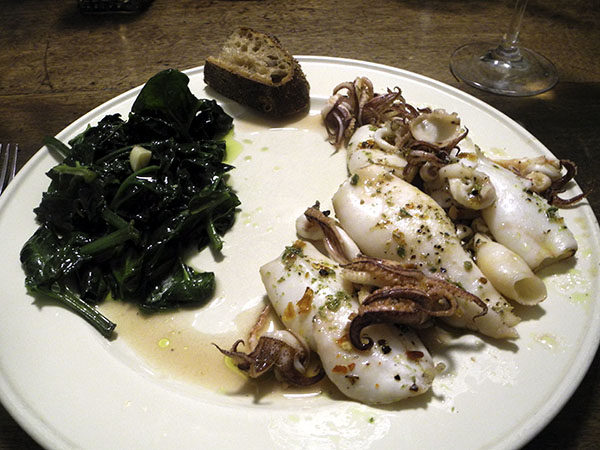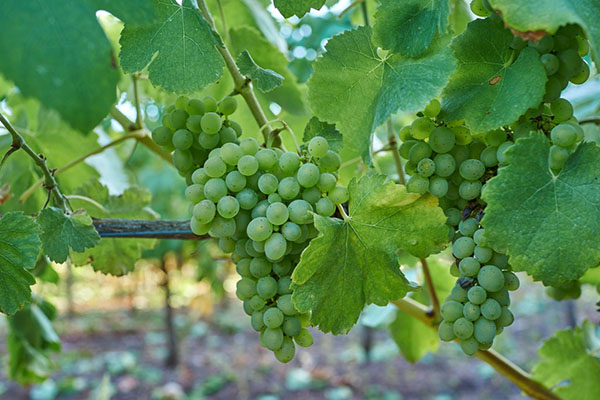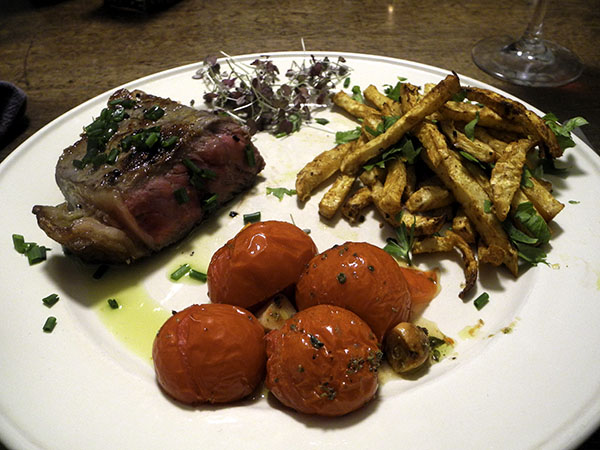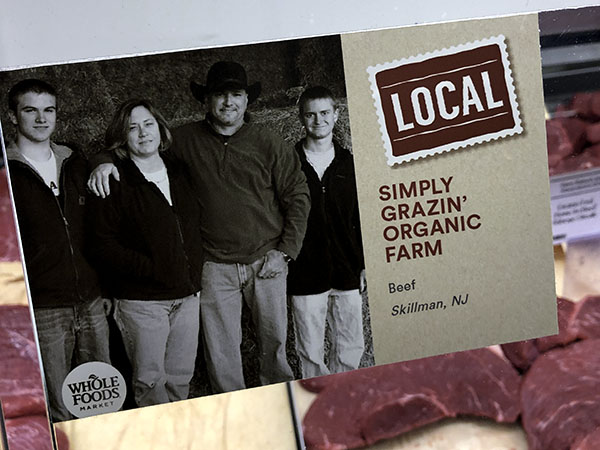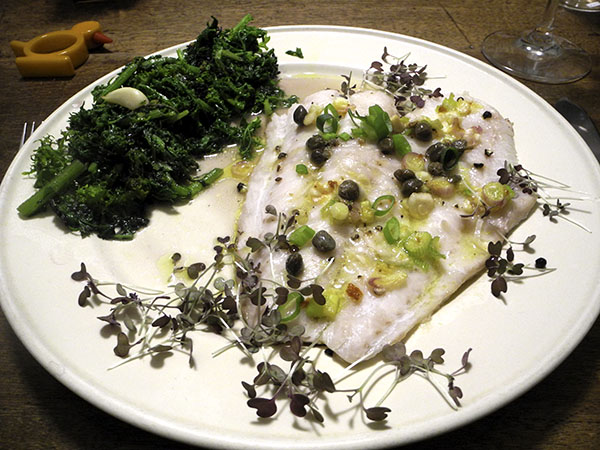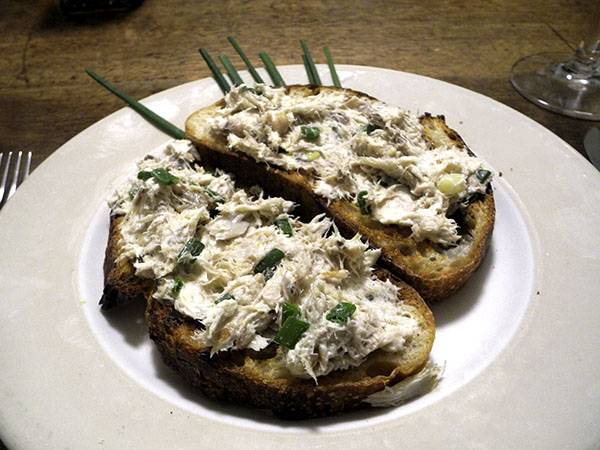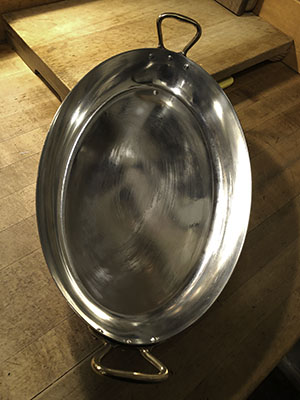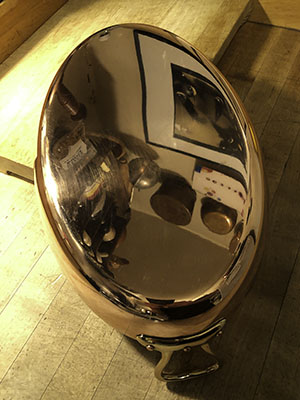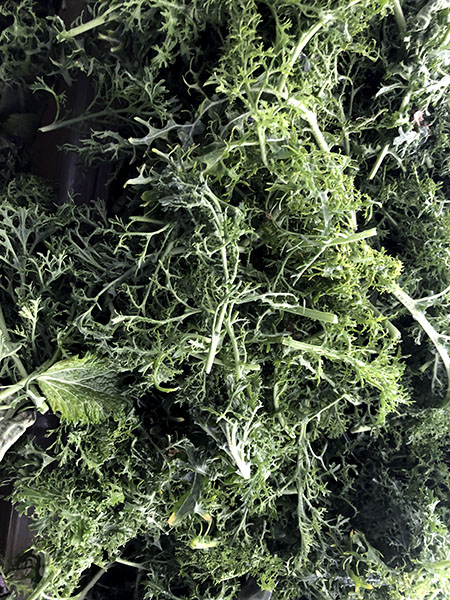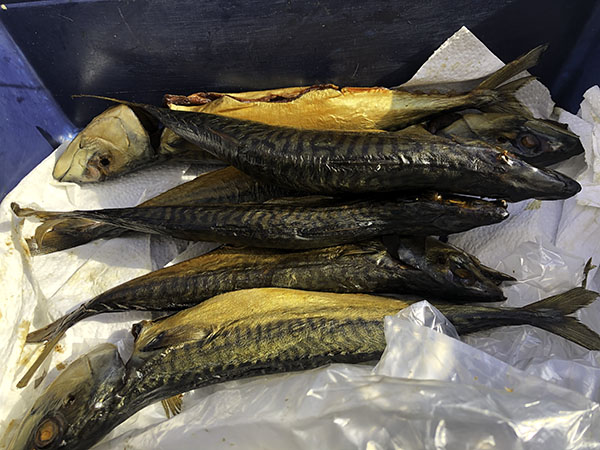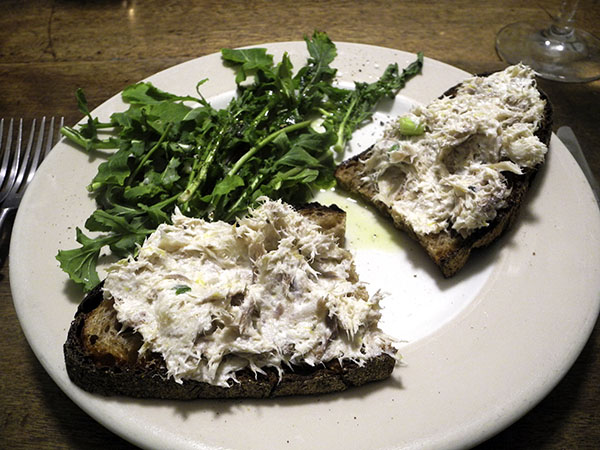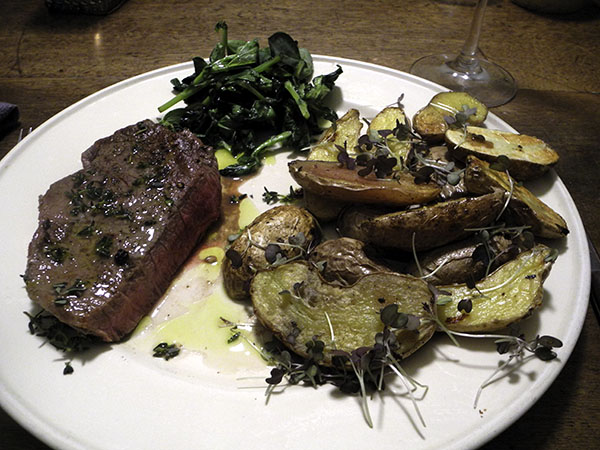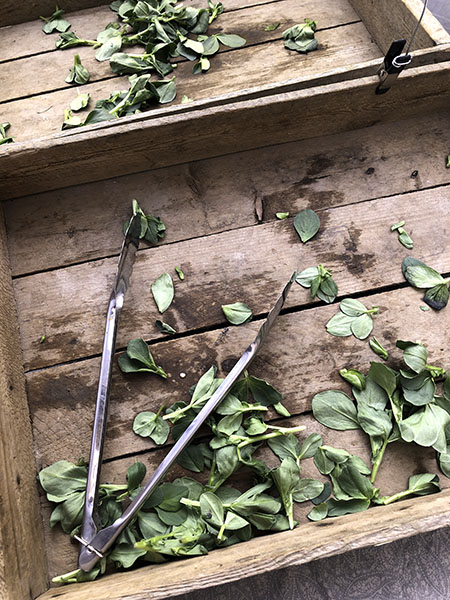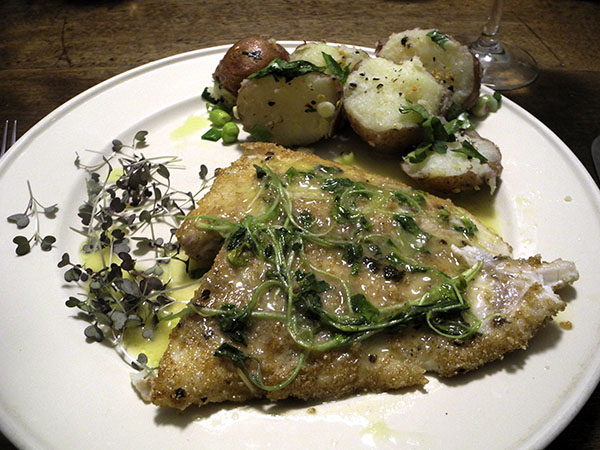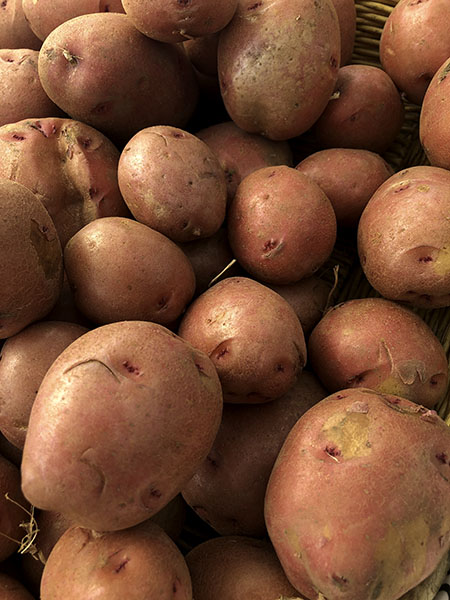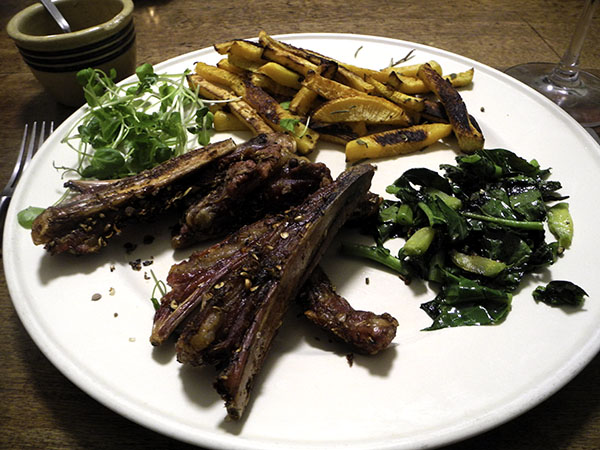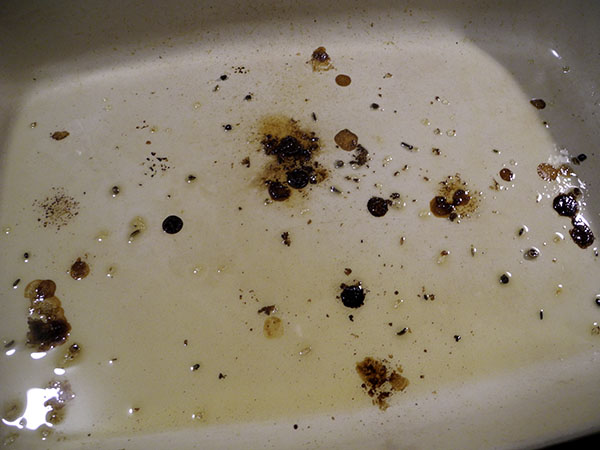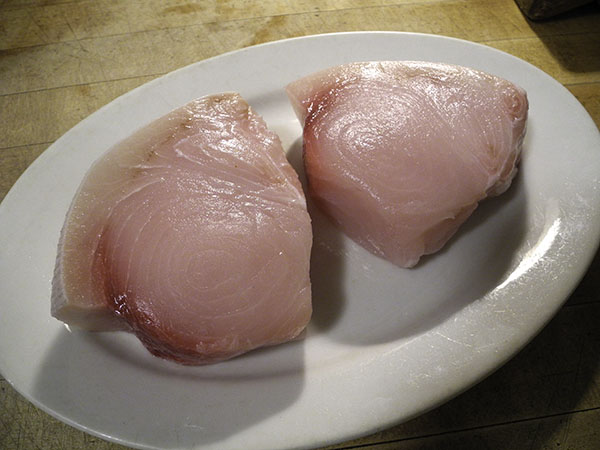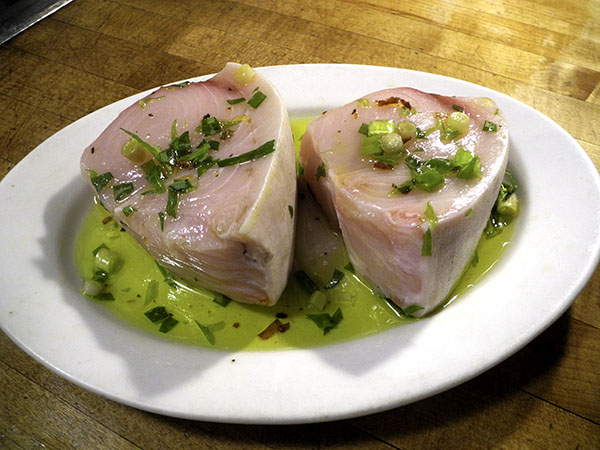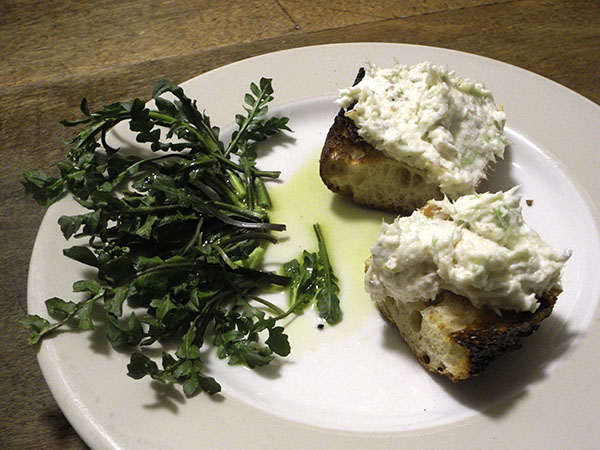
There were two guests, and two fishes, actually, more than two (fishes).
We had friends to dinner and it was decided that seafood should dominate the menu, partly because we figured most New Yorkers rarely cook fish at home, and I definitely do. The first course featured a salad (the fisherman himself calls it a pâté), of several different species, and the main could hardly have been a more classic Northeastern entrée.
It was delicious, but maybe not the best choice for serving guests, since I was in the kitchen quite a bit while they were here, even though, of the 4 courses I served, essentially all one could be described as mostly or entirely ‘prepared’.
We drank a sparking wine while nibbling on fresh radishes and some crunchy things

- a bunch of ‘French breakfast radishes’ from Eckerton Hill Farm, scrubbed, trimmed, and served with a small dish of Maldon salt
- some wonderful ‘Purple Peruvian’ farm-made potato chips from Rick Bishop’s Mountain Sweet Berry Farm
- some rustic Italian breadsticks, Mario Fongo grissini integrali, from Buon Italia
- the wine was a Portuguese (Beira) sparkling rosé, Beira Extra Brut Rosé ‘3B’ Filipa Pato – 2017, from Astor Wines
The first sit-down course was assembled, not cooked.
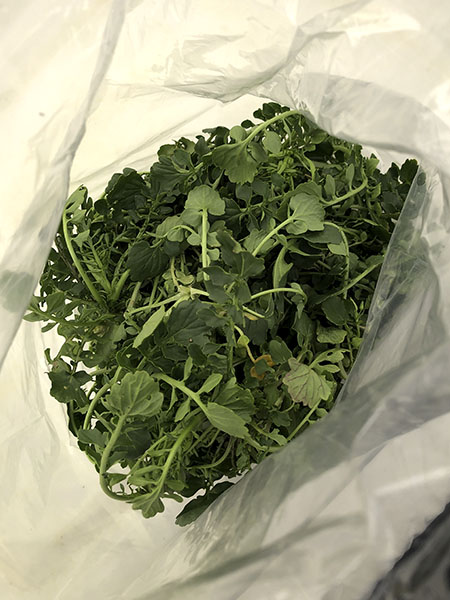
- a composed smoked fish salad using local fish caught by Phil Karlin, whose wife, Dolores Karlin, made it, consisting of more than one white fish species, mayonnaise, red onion, and celery, from P.E. & D.D. Seafood Company(the salad was perfectly seasoned), served on slices of a demi baguette from Bread Alone toasted over an open gas flame on our ‘Camp-A-Toaster’
- wild cress from Lani’s Farm, drizzled with a small amount of a very good olive oil, Badia a Coltibuono, Monti del Chianti, from Chelsea Whole Foods Market
- the wine was a New Zealand (Marlborough) white, Churton Marlborough Sauvignon Blanc 2017, the gift of our 2 guests
Using an expression I remember was very common (both senses) while I was growing up, I suppose the main course was the pièce de résistance.

- two one-pound fillets [I would aim for smaller amounts of both fish and potatoes the next time I’m cooking for 4, because these amounts pretty much crowded the pan] of fresh Atlantic cod, also from P.E. & D. D. Seafood, prepared mostly following an old recipe from Mark Bittman that I had come across years ago: the cod washed and rinsed, placed in a platter [I had to use an oven pan this time, because of the size of the cod] on a bed of coarse sea salt, with more salt added on top until the piece was as completely covered as possible, set aside while a bed of potatoes was prepared for them (meaning that the cod would normally be encased in salt for about 30 minutes), by slicing nearly 2 pounds of really wonderful ‘la ratte’ potatoes from two Greenmarket sources, Phillips Farms and Mountain Sweet Berry Farm to a thickness of less than 1/4 inch, tossing the potatoes in a large bowl with olive oil, sea salt, freshly-ground black pepper, and a large pinch of light orange/gold home-dried Habanada pepper [acquired the summer before last from Norwich Meadows Farm], arranging the potatoes in a large [Bittman wrote “an 8-by-11-inch or similar size baking pan”] rectangular enameled cast iron oven pan, placing them in a 400º oven for 25 minutes or so, or until they were tender when pierced with a knife; while the potatoes were cooking, roughy half way through those 25 minutes, the cod was removed from the salt and the platter or pan on which it had been resting, and thoroughly immersed in or soaked in many changes of cold running water, to bring down the saltiness (the soaking process somehow gives the fish more solidity, which can be easily felt while it’s being handled it at this point), drained, dried, and cut to produce 4 pieces of equal weight (I’ve gotten really good at the geometry of irregular shapes), all of them placed on top of the potatoes once they had cooked, each piece of cod drizzled with a little olive oil, some freshly-ground black pepper scattered on top, the pan returned to the oven for about 15 minutes (the exact time will always depends on the thickness of the cod), the fillets then removed with a wooden spatula (or, even better, 2 wooden spatulas), bringing along with as much of the potatoes as possible with each piece, everything arranged, as intact as possible, onto 4 plates, returning to the pan for the remainder of the potatoes, each serving garnished with micro red mustard from two Guys from Woodbridge
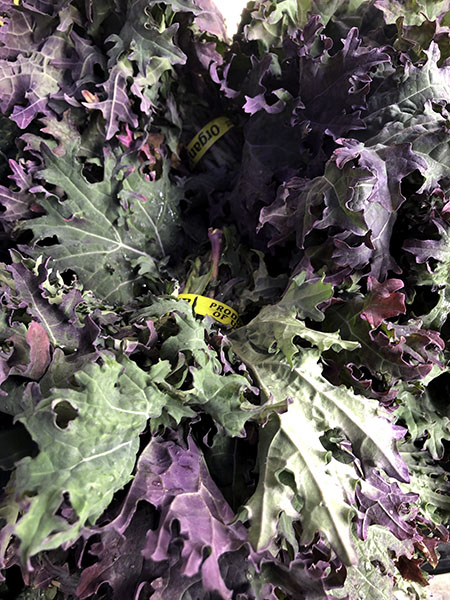 \
\
- a generous amount of purple kale from Norwich Meadows Farm, wilted with olive oil inside a large enameled cast iron pot in which at least 4 halved ‘music garlic’ cloves from Windfall Farms had been allowed to sweat in more than a tablespoon of olive oil until pungent, seasoned with salt, pepper, and a drizzle of fresh olive oil
- the wine was a great Portuguese (Vinho Verde) white, Vinho Verde Loureiro, Aphros 2016, from Astor Wines
There was a cool, citrus dessert, which seemed like a perfect way to end this meal, and the only ‘cooking’ involved the chopping of the topping.
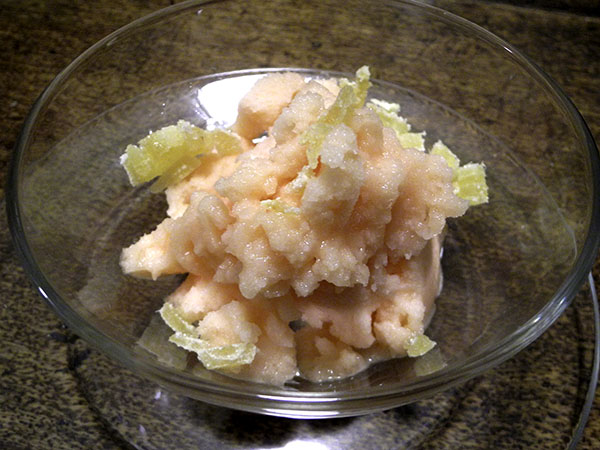
- small glass bowls of Ciao Bella Sicilian Blood Orange gelato from Chelsea Whole Foods Market, sprinkled with chopped candied ginger slices from Whole Foods Market
